In those vernal seasons of the year, when the air is calm and pleasant, it were an injury and sullenness against Nature not to go out and see her riches, and partake in her rejoicing with heaven and earth.
– John Milton

Friday, March 20 is the first day of spring according to the cycle of the year. Have you and your family noticed the subtle shifts that brings the rebirth of life in the natural world? If you have a pond nearby, you’ve probably heard the sound of the spring peepers, singing their joyful songs. Even a cold day or snowfall does not deter them once they get going! Perhaps in your backyard you saw a robin red breast, tugging at a worm from the ground. If you have tulips or daffodils in your landscaping, there’s no doubt that their leaves have emerged from the ground. Has your grass started to green up? Chances are, there is more than just grass poking up from the ground. Why not get dressed up and go outside for a spring herbal scavenger hunt?! Print off a copy of our free printable and head outside to see if you can find 6 common “weed” herbs that are most likely in your yard or a nearby park. I’ve detailed each of the herbs here along with photographs to help with identification.
Dandelion
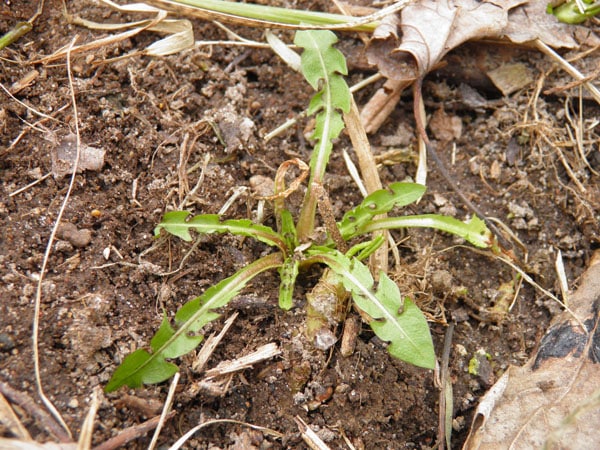
This plant is probably the easiest to identify and most well known. But while many curse this plant for appearing in their yard, he really is a blessing to have around. First of all, who can hate those beautiful yellow flowers? When I see a yard full of them, it makes me happy! And my kids too! We love to pick those blossoms to make Dandelion jelly and Dandelion fritters. They are so delicious and emollient too. The leaves are a powerhouse of vitamins. While they are mildly to strongly bitter, they are one of the world’s most nutritious plants and definitely worth eating! Add a few leaves to your salads, or dry them to sprinkle on all your foods. Eating 1 leaf after your meal can help aid in digestion; our body needs bitters to help stimulate bile production and to keep our digestive system running smoothly. The roots are great too; dried and roasted they made a great decoction (with or without chai blend herbs) for drinking. Strong, bitter and delicious, Dandelion root is diuretic and has a direct action on the liver and kidneys. At the same time, since he is full of potassium, he does not delete potassium as many diuretics do.
Want to learn more about Dandelion? Check out the issue on Dandelion.
Chickweed
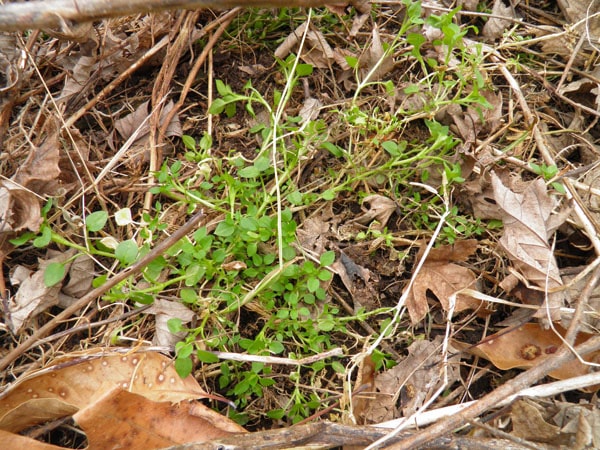
Chickweed is a cool weather plant so this is her time to shine! Chickweed is another nutritious medicinal plant that is delicious added to salads (tastes a bit like spinach) or on sandwiches in place of lettuce. Chickweed loves to help our skin out and works well as an oil or salve on skin issues. I like to add him to my green salve blend. Chickweed is also soothing to our eyes, making a great eye wash for treating itchy, dry eyes, conjunctivitis and pink eye. A poultice can be applied on skin issues such as cuts, scratches, burns and so on for soothing relief.
Want to learn more about Chickweed? Check out the newly revised and expanded issue on Chickweed.
Cleavers
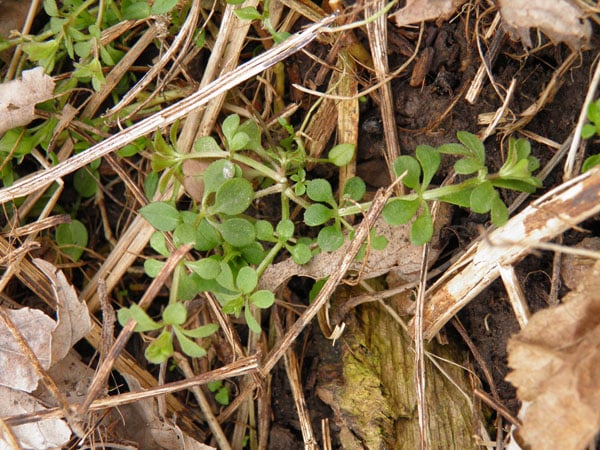
This plant you may not recognize by name, but you’ll probably recognize by his tendency to grab onto your clothing! Cleavers is a fun herb to play with, he can be easily molded into crowns for decorating with flowers because of his sticky hairs that ‘cleave’ onto anything, including himself. This wonderful spring herb is great for the urinary system and one I generally add to a urinary formula. Cleavers is also great for taking care of lymphatic problems. Feeling irritated by the ‘little things’ in life? Try taking Cleavers, you might be surprised how much he can help!
Want to learn more about Cleavers? Check out the issue on Cleavers.
Clover
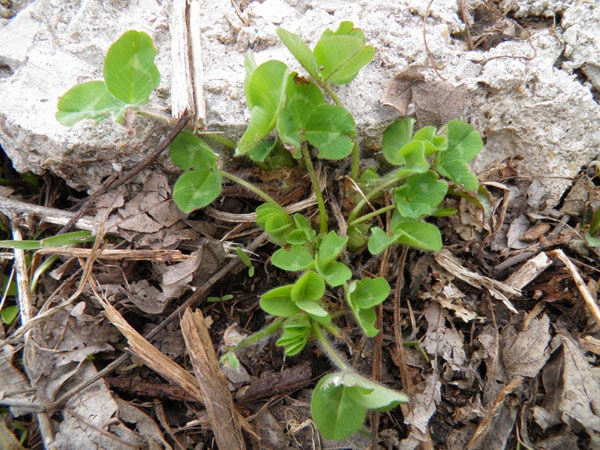
Clover, especially Red Clover, is a wonderful nutritive herb. Red Clover helps to remove ‘stuck’ phlegm from the lungs, breaking up the mucus and moving it out of the lungs. Drinking infusions is helpful for regulating hormones for women, especially during menopause. As a diuretic, Red Clover can also help to flush out toxins. Clover is also a great herb for the bees, many rely on the nectar for making honey, making Clover a great herb to have in your yard – just be careful going barefoot so that no bees’ lives are sacrificed by being stepped on, causing them to sting you, in which case you might want to make sure you have the next herb growing in your yard as well (Plantain)!
Want to learn more about Clover? Check out the issue on Red Clover.
Plantain
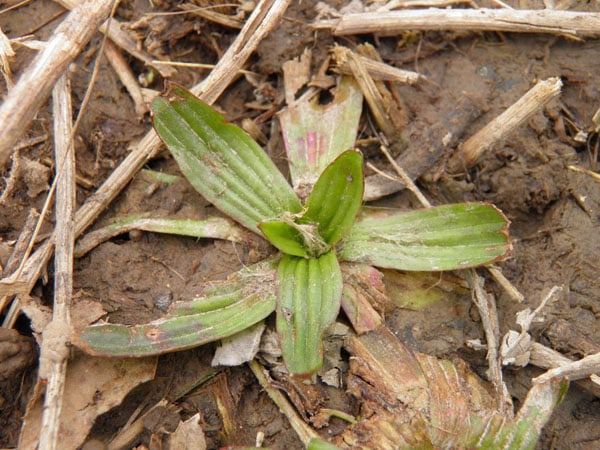
Plantain is one of the first plants my youngest child learned to identify. It was cute to see him running around the yard, searching for Plantain any time someone got a scratch, cut or bee sting! He would chew it up and stick it on their ‘boo-boo’ to help them heal up. He learned early that Plantain is great for just about anything skin related. This amazing herb grows all over the yard and helps to stop bleeding, soothes burns, heals cuts and is wonderful when combined with Chickweed and Violet. Plantain’s drawing power helps to pull out the venom of a bee sting, a splinter and even infection, especially when combined with activated charcoal. Plantain is also great for the digestive system; really there’s almost nothing Plantain cannot do.
Want to learn more about Plantain? Check out the newly revised and expanded issue on Plantain.
Violet
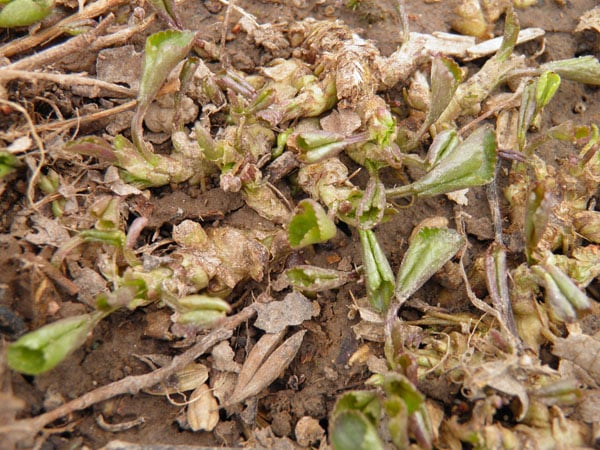
This spring beauty is especially easy to recognize when she blossoms in mid-spring. We have a yard that is almost exclusively Violet and in April, the yard is a blanket of purple. Kids love to pick the flowers and make Violet jelly; the purple jelly is mild tasting and pretty. Violet is very mucilaginous, soothing to the membranes of the body. Violet is great for those dry coughs that give you a tickle in your throat. Her mucilaginous leaves are also soothing for sore throats. Violet has an affinity for women, especially the breasts and can be helpful for painful breast lumps, mastitis and has also shown to be effective against some breast cancer. Violet is soothing to hot, dry skin irritations, dry eyes and dried out sinuses.
Want to learn more about Violet? Check out the newly revised and expanded issue on Violet.
Have the plants started sprouting in your region? What have you discovered growing in your yard?

